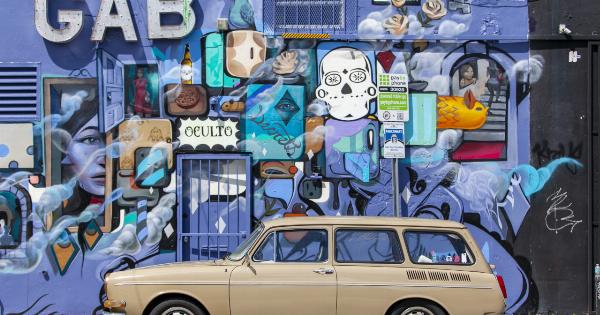Art is an expression of human emotions, struggles, and experiences. It often reflects the social and political climate of the time. In recent years, there has been a growing trend in the art world to address the issue of hardening.
Hardening refers to the hardening of attitudes, political positions, and social norms, which often leads to intolerance, hatred, and violence.
What is Hardening?
Hardening is the process by which individuals or groups become less tolerant towards others who hold different values, beliefs, or traditions. This can result in a range of behaviors, from verbal harassment to physical violence.
Hardening often arises in response to global events such as terrorist attacks, political upheavals, or economic instability.
Art as a Medium of Self-Expression
Art has always been a powerful tool for self-expression and social commentary. In the face of hardening, artists are using their medium to express their thoughts and feelings about the state of the world.
In particular, artists are using their work to confront issues such as racism, xenophobia, and intolerance. By doing so, they are opening up a dialogue about the underlying causes of hardening and what steps can be taken to counteract it.
The Role of Art in Society
Art can play a vital role in society. It can be a reflection of the times we live in, a means of communicating emotions and ideas, and even a catalyst for change.
During times of social and political upheaval, artists have often been at the forefront of social movements. They use their work to raise awareness of issues, to challenge social norms and to promote inclusivity.
Art in the Age of Hardening
With the rise of hardening, artists are finding new ways to engage with their audience. They are using their work to explore the complexities of our current political and social climate, to promote empathy and understanding, and to encourage dialogue.
Some are addressing the issue head-on, while others are using metaphor and symbolism to convey their message.
The Impact of Hardening on Artistic Expression
Hardening can have a significant impact on artistic expression. In some cases, artists may feel reluctant to address controversial issues for fear of backlash or violence. This can result in self-censorship and a lack of diversity in the arts.
However, many artists are refusing to be silenced. They are using their art to speak out against hardening, to challenge social norms, and to provoke discussion.
Art as a Catalyst for Change
Art has always been a catalyst for change. Throughout history, artists have used their work to make a statement about social injustice, political upheaval, and human suffering.
In the age of hardening, artists are using their work to promote inclusivity, to challenge hatred and intolerance, and to inspire hope and change. By doing so, they are sending a powerful message that the arts have a critical role to play in shaping the future of our society.
New Directions in Art
As hardening continues to impact our society, artists are exploring new directions in their work. Some are using technology to create interactive installations that engage the public in a dialogue about hardening.
Others are using social media and other online platforms to reach a wider audience. Still, others are exploring collaborative projects that bring together artists from different backgrounds to create a shared vision for the future.
The Future of Art in the Age of Hardening
As we look to the future, it is clear that art will continue to play a critical role in our society.
It will be important to support and promote artists who are using their work to address issues of hardening, to promote empathy and understanding, and to inspire change. By doing so, we can ensure that the arts remain a powerful force for social good.
The Power of Art
Art has always had the power to inspire, challenge, and transform our lives. In the age of hardening, it is more important than ever to support and promote artists who are using their work to make a positive impact on our society.
By doing so, we can harness the power of art to promote inclusivity, foster empathy and understanding, and create a brighter future.






























